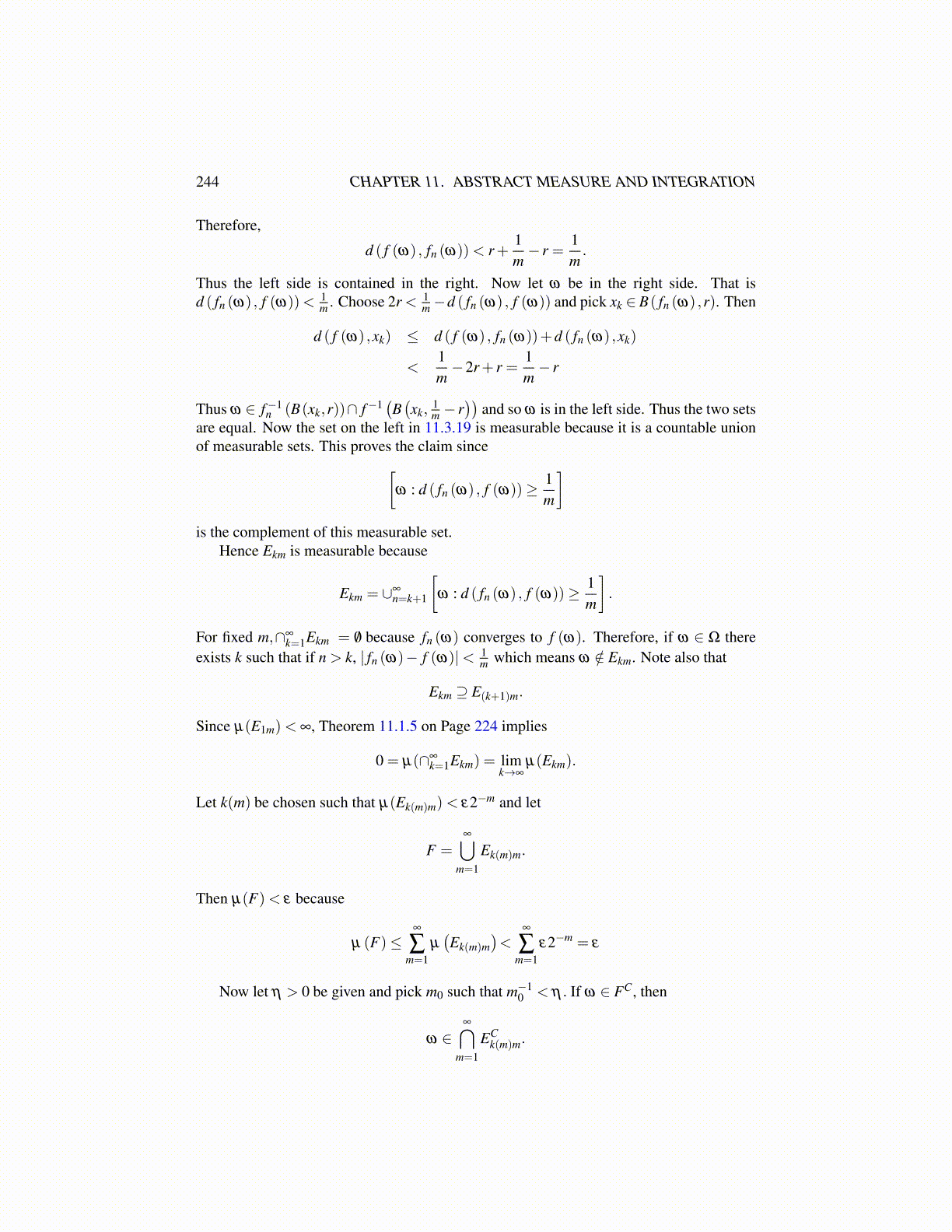
244 CHAPTER 11. ABSTRACT MEASURE AND INTEGRATION
Therefore,
d ( f (ω) , fn (ω))< r+1m− r =
1m.
Thus the left side is contained in the right. Now let ω be in the right side. That isd ( fn (ω) , f (ω))< 1
m . Choose 2r < 1m−d ( fn (ω) , f (ω)) and pick xk ∈ B( fn (ω) ,r). Then
d ( f (ω) ,xk) ≤ d ( f (ω) , fn (ω))+d ( fn (ω) ,xk)
<1m−2r+ r =
1m− r
Thus ω ∈ f−1n (B(xk,r))∩ f−1
(B(xk,
1m − r
))and so ω is in the left side. Thus the two sets
are equal. Now the set on the left in 11.3.19 is measurable because it is a countable unionof measurable sets. This proves the claim since[
ω : d ( fn (ω) , f (ω))≥ 1m
]is the complement of this measurable set.
Hence Ekm is measurable because
Ekm = ∪∞n=k+1
[ω : d ( fn (ω) , f (ω))≥ 1
m
].
For fixed m,∩∞k=1Ekm = /0 because fn (ω) converges to f (ω). Therefore, if ω ∈ Ω there
exists k such that if n > k, | fn (ω)− f (ω)|< 1m which means ω /∈ Ekm. Note also that
Ekm ⊇ E(k+1)m.
Since µ(E1m)< ∞, Theorem 11.1.5 on Page 224 implies
0 = µ(∩∞k=1Ekm) = lim
k→∞µ(Ekm).
Let k(m) be chosen such that µ(Ek(m)m)< ε2−m and let
F =∞⋃
m=1
Ek(m)m.
Then µ(F)< ε because
µ (F)≤∞
∑m=1
µ(Ek(m)m
)<
∞
∑m=1
ε2−m = ε
Now let η > 0 be given and pick m0 such that m−10 < η . If ω ∈ FC, then
ω ∈∞⋂
m=1
ECk(m)m.